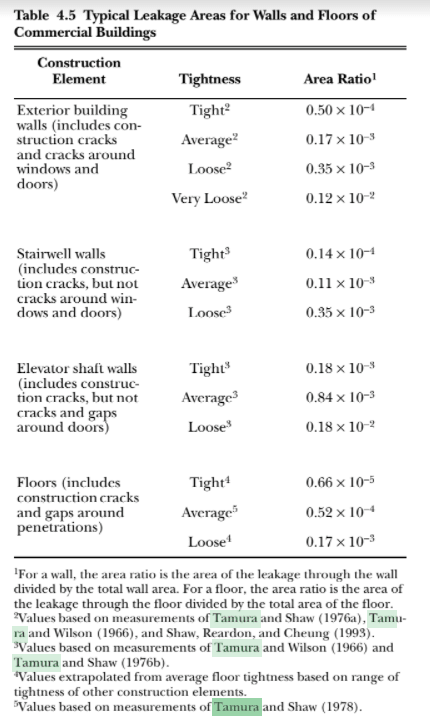Hi all,
Designing a stairwell pressurized with the use of NFPA 92A, there is this table which represents the Leakage Areas of buildings. I particulary appraciate the fact that reference are presented, but I have a question: how can I say if a wall is tight average or loose? Is the choice of loose wall always a safe assumption? I am afraid that assuming a wall too loose can lead to a flow rate that when the doors are closed can bring to pressure difference that does not allow to open the doors. I don't know in my geographic area people that are expert about stairwell pressurization, so I hope that someone can give me some hints.

Designing a stairwell pressurized with the use of NFPA 92A, there is this table which represents the Leakage Areas of buildings. I particulary appraciate the fact that reference are presented, but I have a question: how can I say if a wall is tight average or loose? Is the choice of loose wall always a safe assumption? I am afraid that assuming a wall too loose can lead to a flow rate that when the doors are closed can bring to pressure difference that does not allow to open the doors. I don't know in my geographic area people that are expert about stairwell pressurization, so I hope that someone can give me some hints.

